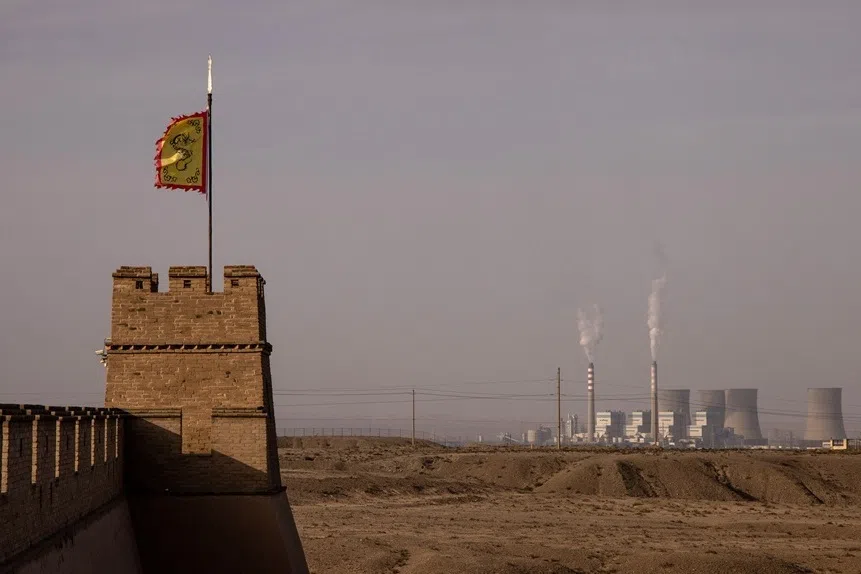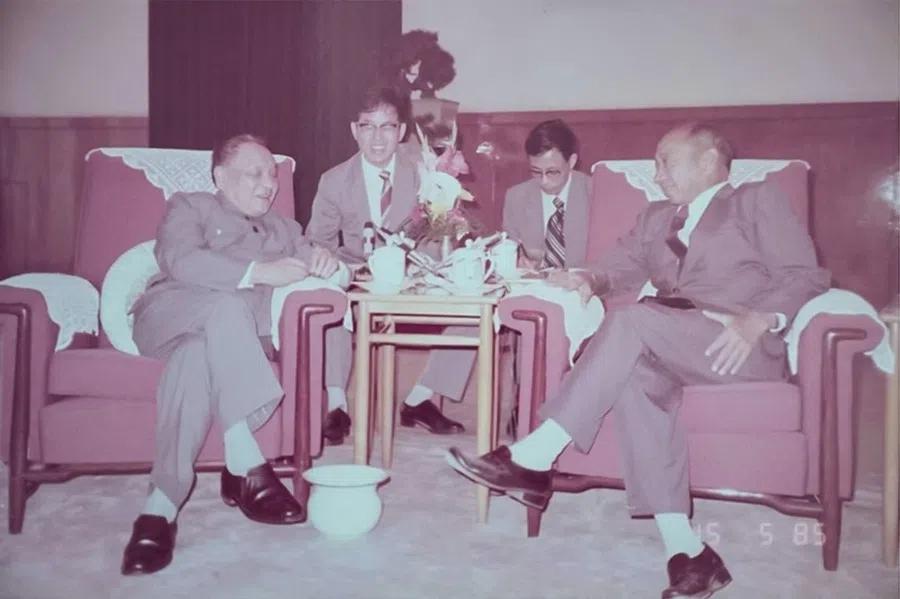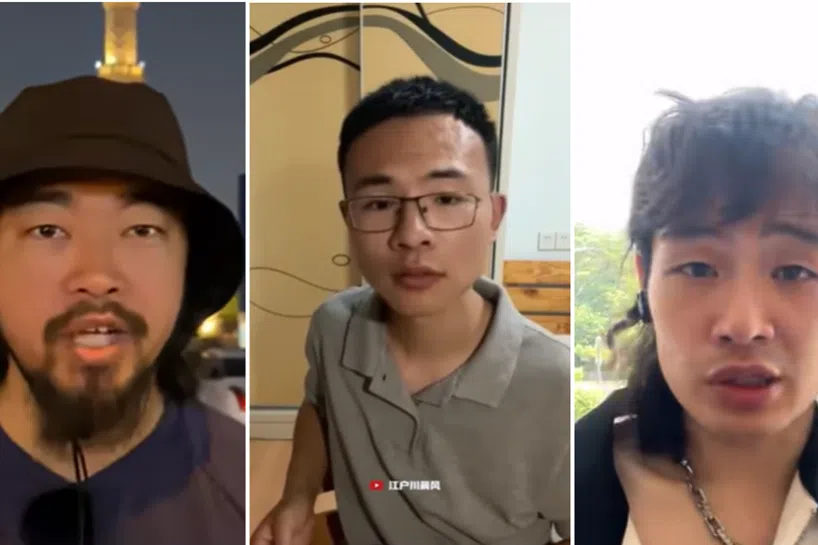Can small states continue to avoid choosing between China and the US?
With the jostling between China and the US, one country that seems to have found a balance between these two powers is Singapore. In fact, other ASEAN countries are also seeking not to take sides, which appears to be the most prudent strategy. However, ISEAS academic William Choong thinks that the choice of not making a choice may not be feasible in the near future.

In September 2019, Singapore and the US renewed a key defence agreement that has allowed the American military to access the Republic's air and naval bases for nearly 30 years. The extension of the 1990 memorandum of understanding (MOU) by another 15 years to 2035 will continue to underpin American power in the region.
Speaking in New York, Prime Minister Lee Hsien Loong said Singapore was "very happy" with the relationship. He said that the Republic hoped to grow it further, such that the relationship would serve as a means for Washington to "deepen its engagement in Southeast Asia and in the Asia-Pacific region".
The 1990 MOU, which was previously renewed in 2005, is a classic exposition of Singapore's foreign and defence policy. As Michael Leifer noted, Singapore with its stellar achievements has had an "intensely innate sense of vulnerability". The Republic has long seen itself as a price-taker of its external environment - that is, its leadership took the world as it is, it does not adopt an "idealistic view" but seeks to "live with it".
Singapore's inherent qualities - its vulnerability and its desire to adapt to its external environment - led to three overarching ideas in its approach. First, it seeks to maximise the number of like-minded friends so as to maintain freedom of action as a sovereign and independent nation. Second, it seeks a balance of power in the region that can ensure that no major power dominates. Lastly, it seeks to secure the US's presence in the region, a situation that ensures stability and serves the interests of all countries, including those of China.
The challenge for Singapore - and many other Asian states - in the coming years is the diminishing latitude in which it can continue to eschew choosing sides, given the increasing breadth and scope of Sino-US competition.
One major outcome of the three concepts is that the Republic seeks to get external powers, in particular, the US, involved in the island's security. Speaking in 2009, founding Prime Minister Lee Kuan Yew expressed the need for Singapore to make itself relevant, performing vital functions in the international system so that "other countries have an interest" in Singapore's continued survival and prosperity.
The consistent approach adopted by Mr Lee and maintained by current Prime Minister Lee Hsien Loong has served Singapore well. In particular, a position of "not choosing sides" between China and the US is a natural evolution of the approach of maintaining a balance of power as described above. The challenge for Singapore - and many other Asian states - in the coming years is the diminishing latitude in which it can continue to eschew choosing sides, given the increasing breadth and scope of Sino-US competition.
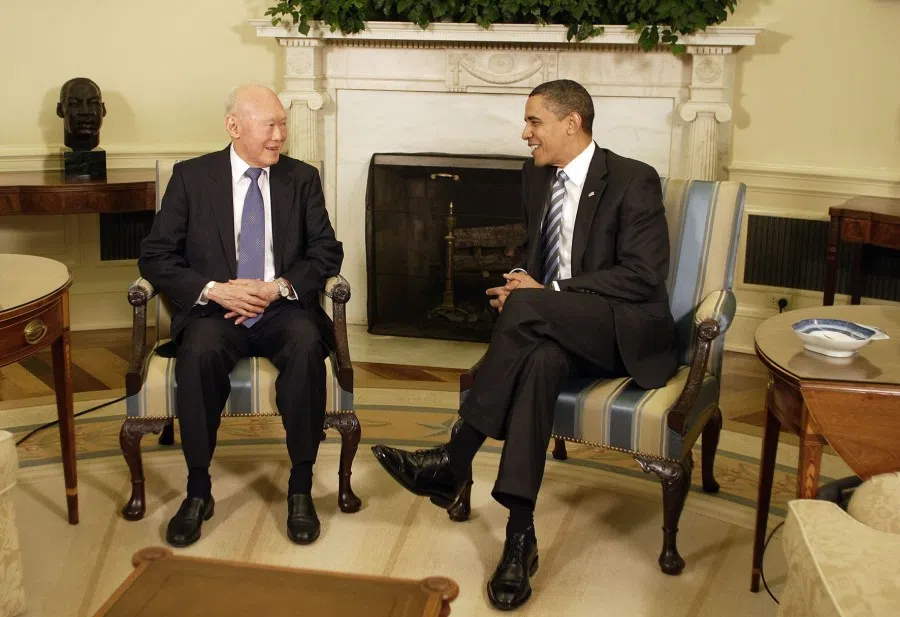
Senior US official: "Singapore is a partner that acts like an ally"
Since the late 1960s, Singapore's leaders, in particular Lee Kuan Yew, repeatedly expressed anxiety about the declining military presence and involvement of Western powers in Southeast Asia, and since the 1990s, East Asia as a whole. As applied to the US presence and involvement, this would endanger regional stability by providing opportunities for other large powers to assert themselves. Singapore has sought to prevent the dominance of any power that might threaten the island's independence. As a result, it was vital for Singapore to have "overwhelming power on its side".
Singapore's desire to see the involvement of Western powers in the region was put to the test in the late 1960s and 1970s, with the British withdrawal east of Suez, the communist victories in 1975 and Vietnam's subjugation of Cambodia. Lee Kuan Yew sought to prevent regional powers from dominating the region. He believed in the domino theory, and as a result sought a sustained American presence in Vietnam. In Lee's perspective, bigger countries such as India and Japan could afford to distance themselves from the struggle between China and the US. But smaller Asian countries tend to fear that should America withdraw from Southeast Asia, the Chinese would fill the vacuum and that would be the end of their independence. As a result, he was the "most instrumental factor" behind the growth in Singapore-US relations.
In 1966, Singapore was used as a rest and recreation destination for US troops deployed in Vietnam. The Republic, which supported the US war effort in Vietnam, provided maintenance and resupply services for the US Navy. In 1969, a local US Navy office was set up to support visiting ships. In 1978, it was disclosed that the US was operating long-range patrol flights out from Tengah Airbase into the Indian Ocean.
Singapore treats Washington's power and presence as being vital to regional security, so much so that one senior US official has said that Singapore is a partner that acts like an ally (while the Philippines is more an ally that acts like a partner).
The 1980s saw the continued development of bilateral relations. In 1981, Exercise Tiger Balm, an annual brigade-level command post exercise, was initiated, and is now the longest- running military exercise between the two militaries. During the First Gulf War in 1990-1991, Singapore provided support to US naval ships. Before stepping down as prime minister, Lee Kuan Yew signed a memorandum of understanding with US Vice President Dan Quayle in November 1990. The MOU, which was subsequently renewed in 2005 and 2019, facilitates the US military's access to Singapore's air and naval bases and provides logistics support to US personnel, aircraft and vessels. The 1990 MOU was strategic at a time when the US military was moving out of Subic Naval Base and Clark Air Base in the Philippines. In 2005, a Strategic Framework Agreement (SFA) recognised Singapore as a major security partner of the US. A 2005 Defence Cooperation Agreement (DCA) provided new areas of mutually beneficial cooperation. An enhanced DCA signed in 2015 provided new areas of cooperation in five areas: military, policy, strategic, technology and non-conventional security. The SFA provided the US with access to foreign facilities on a largely rotational basis, skirting sensitive sovereignty issues, and built on Washington's strategy of "places not bases".
Relations on the trade front are similarly strong. The US is the biggest source of foreign direct investment for Singapore and enjoys a trade surplus with the Republic. The US-Singapore free trade agreement, which went into effect in 2004, was the first US bilateral FTA with an Asian country, and paved the way for the landmark 12-nation Trans-Pacific Partnership (which the US withdrew from under the Trump Administration). Singapore treats Washington's power and presence as being vital to regional security, so much so that one senior US official has said that Singapore is a partner that acts like an ally (while the Philippines is more an ally that acts like a partner).
This is somewhat analogous to the concept of 'virtuous promiscuity'. Coined by Singapore diplomat Tommy Koh, it refers to Singapore's aggressiveness in pursuing trade deals with many countries.
Balance, not conscribe relations with China
Singapore has not pursued its enhanced relations with Washington in isolation; it has also pursued relations with China with the same energy. Like many other Asia-Pacific countries, Singapore leverages on China's economic engine, while benefiting from the security guarantees that the US has provided in the region. Asked in 2013 whether he worried about the rise of China, Prime Minister Lee said Singapore would like to "have our cake and eat it and be friends with everybody." As long as Singapore's friends remain "friends with one another" (this including the US, India and the European Union) Singapore was "okay", he added. This is somewhat analogous to the concept of "virtuous promiscuity". Coined by Singapore diplomat Tommy Koh, it refers to Singapore's aggressiveness in pursuing trade deals with many countries.
In 1990, Singapore became the last of the original five ASEAN nations to normalise relations with China. The Republic, with its Chinese majority population, has been sensitive to the perception of its neighbours and avoid being labelled a "third China". Sino-Singapore relations are currently in a healthy state. Singapore is China's top foreign investor and a firm supporter of the Asian Infrastructure Investment Bank and the Belt and Road Initiative. The two governments have annual high-level ministerial consultations in the form of the Joint Council for Bilateral Cooperation, and have formed partnerships to develop three projects in China so far: the Suzhou Industrial Park, the Chongqing Connectivity Initiative and Tianjin Eco-City.
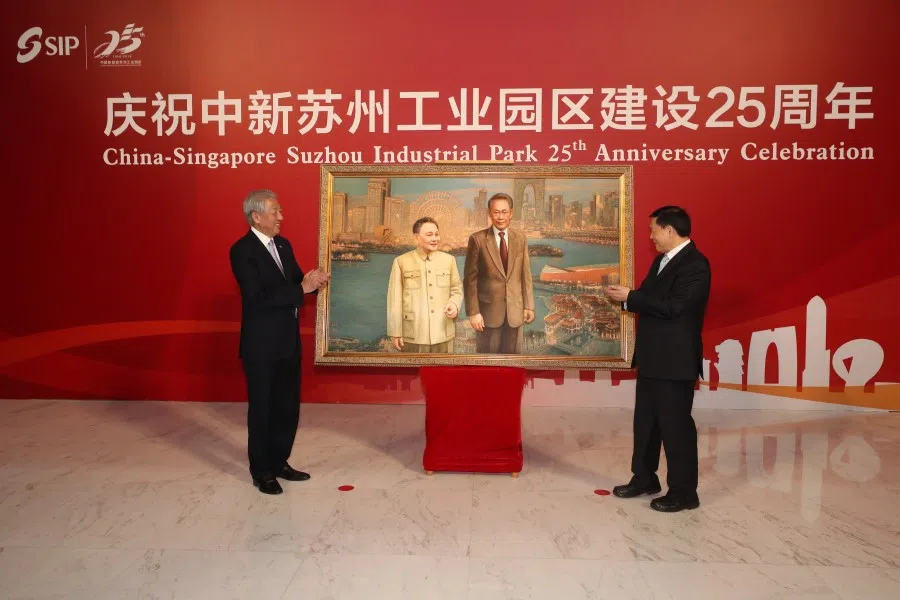
The bilateral relationship has also weathered some storms. In 2016, nine Singapore Armed Forces infantry carrier vehicles en route from Taiwan were seized in Hong Kong. This was followed by Beijing expressing its opposition to any country with any form of official exchanges with Taiwan, which it considers a rogue province. In October, a People's Liberation Army major-general told Chinese state radio that China should take retaliatory actions against Singapore for internationalising the South China Sea dispute. The incidents raised the question of whether Beijing was putting the spotlight on Singapore's position that Asia-Pacific countries not "take sides" in the contest for influence between China and the US.
... Singapore and smaller states in the Indo-Pacific have sought to avoid stark choices in the geopolitical competition between China and the US... the "blessedness of not making a choice."
Central to Singapore's approach is the concept of balance in its relationship with China and the US. In 2003, Singapore reportedly turned down the offer of becoming a major non-NATO ally of the US. Speaking to the Asahi Shimbun in 2010, Mr Lee Kuan Yew said Singapore had never sought to conscribe (zhiheng) China. Instead, the Republic sought to achieve a balance (pingheng) in the Pacific, based on the presence of American power. Addressing American antipathy towards China and a bipartisan position to curb its rise, Prime Minister Lee Hsien Loong said in 2019 that the US's allies and partners were so "deeply enmeshed with the Chinese" that forcing them to disentangle themselves from Beijing would be "a very challenging stance to take".
A good example of Singapore's balancing approach is the updating of a Sino-Singapore defence agreement. Signed in October 2019, the enhanced Agreement on Defence Exchanges and Security Cooperation is built on a January 2008 agreement that catered for the PLA and Singapore Armed Forces to train together, and has been broadened to include the establishment of a regular ministerial-dialogue, a Visiting Forces Agreement for troops participating in bilateral exercises, mutual logistics support, and a bilateral hotline. It was signed 27 days after Singapore and the US had extended their 1990 MOU. According to one analyst, the Sino-Singapore deal appeared to be designed for China's military to maintain constructive engagement in defence diplomacy; as part of the Republic's balancing act, Singapore will not commit US-procured weapons in military exercises with the PLA.
Blessedness of not making choices
Traditionally, Singapore and smaller states in the Indo-Pacific have sought to avoid stark choices in the geopolitical competition between China and the US - what has been termed the "blessedness of not making a choice". ASEAN member countries have similarly adopted an equidistant position between China and the US. Specifically, ASEAN has shunned openly supporting the US-led Free and Open Indo-Pacific strategy. ASEAN's approach to the Indo-Pacific has been inclusive and not aimed at any particular power (given the sub-context that the US FOIP strategy has an element of containing China).

The current ructions in Sino-US relations, however, mean that such a position of "not making choices" between China and the US is coming under increasing pressure. Three recent major US documents on the US's Indo-Pacific strategy have highlighted China's challenges to American interests.
Released on 1 June 2019, a Department of Defense report included a section on China as a revisionist power, and detailed Chinese behaviour as being aimed at undermining the values and principles of the international system and asserting control over disputed territory in the South China Sea. The report added that China's goal in the Indo-Pacific was to achieve regional hegemony in the near-term and global pre-eminence in the long term. A November 2019 report on the Indo-Pacific strategy published by the State Department said that Beijing sought to "undermine the conditions that have promoted stability and prosperity in the Indo-Pacific for decades". Six months later in May 2020, the White House released a report titled "United States Strategic Approach to the People's Republic of China", arguing that the long-held policy of encouraging China to become a "responsible global stakeholder" had failed; rather, China was using its power to "compel acquiescence" from nation states, thus harming vital American interests and undermining the sovereignty and dignity of countries around the world. The danger is that China is now seen as an ideological threat in almost existential terms.
On the Chinese side, Xi Jinping's insistence that socialism will triumph over capitalism raises the spectre that Sino-US competition is spreading into the ideological realm. His remarks were made in January 2013, shortly after he became CCP general secretary, but were kept secret until the spring of 2019. China has also become increasingly antagonistic towards the US, particularly to American allegations that Covid-19 originated in China. China's more muscular response, and "wolf-warrior" diplomacy, come amid a wave of nationalist sentiments in China, in what Zheng Yongnian terms "hybrid nationalism" - a mix of the older generation's grievance over China's century of humiliation, and the younger generation's "commercial nationalism" based on pride in China's growing prosperity.
"No sweet spot"?
In the ensuing Sino-US competition, many countries in the Indo-Pacific have resorted to "varying combinations" of hedging and balance, and in some cases, bandwagoning. These regional states want to continue to reap the benefits of China's economic clout. Many welcome (albeit privately) the Trump's administration's pushback against China's assertiveness, but they have sought to avoid "having to choose" between the two major powers. As for Singapore, this sweet spot of not making a choice has endured for some time. Unlike America's formal treaty allies, Singapore does not bear the burden of hosting military bases and enjoys extensive military ties with Washington. In addition, the Republic's ties to the US do not provoke Chinese opprobrium.
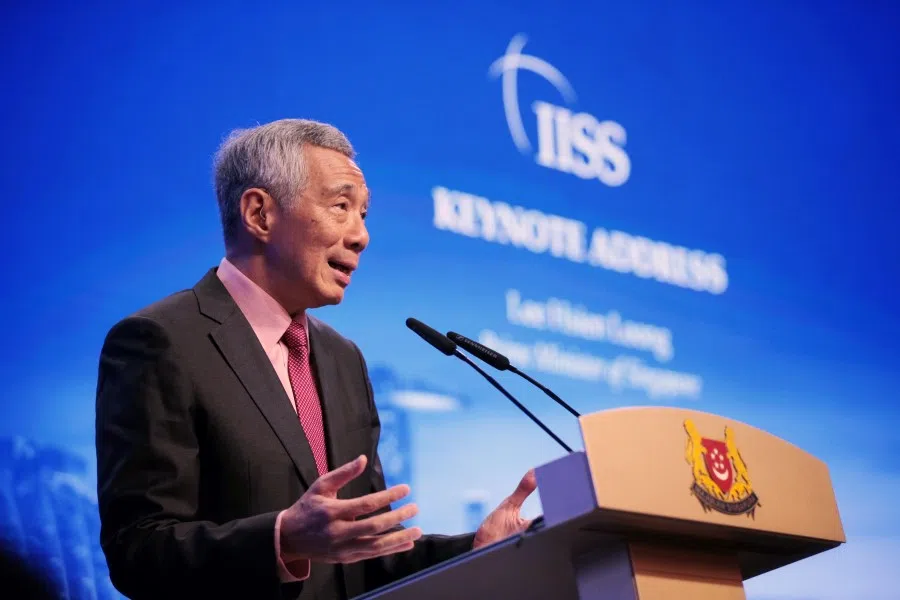
One way to extend the sustainability of this sweet spot is to encourage China and the US to work together and cooperate. Speaking at the Shangri-La Dialogue in June 2019, PM Lee called on Washington and Beijing to reach a "strategic accommodation" despite their dispute over trade, technology and other issues. Writing in Foreign Affairs a year later, PM Lee noted that cooperation between the two big powers is the "true test of statecraft" and will determine if humanity progresses on global problems such as climate change, nuclear proliferation and the spread of infectious diseases.
The probability of such cooperation, however, looks low for now. The landmark phase one trade agreement signed by China and the US in January 2020 has yet to be implemented, and President Trump has said that the decoupling of the two economies remains an option. On 8 July, Federal Bureau of Investigation director Christopher Wray said that acts of espionage and data and monetary theft by China posed the "greatest long-term threat" to the future of the US. A generally hardening - and bipartisan - stance in America towards China will likely continue, going into the November 2020 presidential elections.
The perceived loss in American leadership will also add to the strategic dilemma for smaller states in the Indo-Pacific, including Singapore. Asked by CNN in March 2020 about the need for US leadership in global responses such as pandemics, PM Lee noted that the US has for decades contributed to the world in such situations. But if America is in a "different mode", Singapore will "get by" and other "configurations will eventually work out but it would be a loss". It is not clear what PM Lee meant by other configurations; but it is clear that in the Indo-Pacific, China's power is in ascendance. In January, the ISEAS - Yusof Ishak Institute's Southeast Asia Survey of 1,308 respondents showed that many do feel that China has eclipsed the US as the most important strategic and political player in the region.
This means that the search for the elusive sweet spot for Singapore to be in, between China and the US will grow increasingly difficult. In addition to Singapore, other Southeast Asian states such as Vietnam and the Philippines are facing the same dilemma.
China is Vietnam's largest trading partner and an important source of foreign investment. Yet, only the US is seen as the country with the power and will to contain China's strategic ambitions, including in the South China Sea. If Beijing continues its assertiveness in the South China Sea, Vietnam will have little choice but to push defence ties with the US further forward.
The Philippines is experiencing a similar dilemma. In February 2020, President Rodrigo Duterte announced the cancellation of the Philippines-United States Visiting Forces Agreement, a defence pact that has undergirded cooperation between the two military allies for two decades. However, in June 2020, Manila suspended the decision to cancel the pact. The change of heart highlights Manila's growing anxiety over China's opportunism in the South China Sea during the Covid-19 pandemic. As per Vietnam, a flight to safety in the form of military cooperation with America will only be accentuated with growing Chinese assertiveness.
In essence, not making choices between China and the US is a choice in itself. But as Singaporean diplomat Bilahari Kausikan has said, there may well be "no sweet spot" for Singapore to keep both the Chinese and Americans "happy." In fact, the search for the sweet spot will only get more elusive.
This article was first published as ISEAS Perspective 2020/80 "China-US Relations: Singapore's Elusive Sweet Spot" by William Choong.
Related: Should China station fighter jets in the South China Sea? | ASEAN's future: China or the US? | There will be no peaceful rise - China-US relations enters a new phase | Could China-US tensions in the South China Sea escalate into a hot war? | China wants a multipolar world order. Can the world agree? | The US will accelerate its own decline by suppressing China

